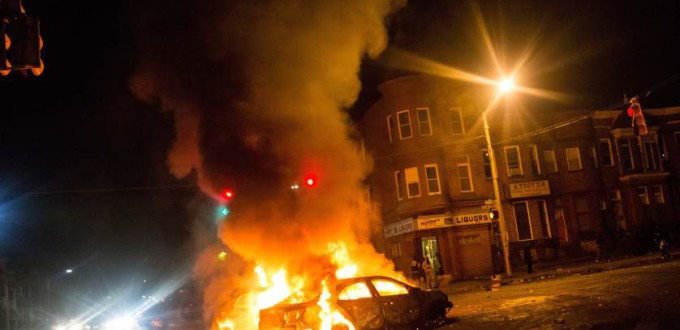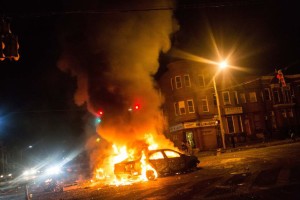What began as seemingly peaceful protests sparked by the death of Freddie Gray, a 25 year-old man who suffered a fatal injury to the spinal cord while in police custody, erupted into violent demonstrations on April 27th, hours after Gray’s funeral. Rioters began throwing stones and bricks at on-duty police officers, looting stores in Downtown Baltimore, and setting fire to at least one store by early afternoon. Journalist Jennifer Ludden, reported that the crowd was made up largely of youths, and NPR later reported that of the 234 people that have been arrested 34 are juveniles. In a study done by the Washington Post, 80% of teens in Baltimore reported having little to no trust in “the police, the justice system, the broader government, and other law enforcement figures.” When interviewed an anonymous teenager summed up this lack of trust by stating, “People already didn’t like the police, but now it’s like they want to retaliate even more just because they’re harassing them a lot more than they used to. Like say you don’t got drugs on you or something like that and they stop you one day, then they stop you the next day, and the next day and like their anger is building up towards the police so they want to retaliate.” These feelings of distrust mixed with poor feelings about their environments, teenagers felt the need to participate in the riots that broke out. As the violence escalated, nearby cities and towns began to send in police reinforcements to try to put out the fire that was rapidly growing–literally and metaphorically.
Soon after, the governor of Maryland declared Baltimore to be in a state of emergency–stores and public institutions began to shut down, including Camden Yards, where the Orioles were scheduled to play the Chicago White Sox that night. According to a report by NPR 2,000 members of the National Guard and 1,000 other police officials were stationed around the city and a 10:00 PM to 5:00 AM curfew was put into place by the mayor of Baltimore, Stephanie Rawlings-Blake, on April 28th.
As the riot unfolded, many people in Baltimore grappled with their understanding of and the their thoughts about the anger fuming from the streets of the city. A protester, Anaya Maze, agreed with the violence and anger that was ripping apart the streets of her hometown. “I see no shame in being violent to be heard” she said. “If you can’t do it peacefully, then what other option do you have?” However Pierre Thomas, a 37 year-old bystander, felt differently. “Everybody is angry. But there is a right and wrong way to do it. I understand why they are doing it but I do not support it. They are trashing their own place.”
So what is the underlying issue? From a distance, the Baltimore riots seem to mirror the crisis that broke out last summer in Ferguson, Missouri after the death of Michael Brown. However, Steve Inskeep, a reporter from NPR said, “I was about to call Freddie Gray’s death the latest in a string of high-profile deaths of African-American men involving the police. But that’s not quite right. For one thing, the uprising did not bring a black populace in confrontation with an overwhelmingly white police force as happened in Ferguson, Missouri, last year.” What is happening in Baltimore is a different story. Taiwan Parker, who lives in the same neighborhood where Gray was arrested said, “It ain’t no race thing–it’s not a race thing at all.” Parker explains that issue is one of class. Parker, along with other members of the community feel that they are unfairly looked down upon “as druggies… while they live in poverty, but that is not all true.” Many like Parker and Pierre Thomas, hoped for these grievances to be heard in a less violent way, agreeing with President Obama who said, “There is no excuse for the violence we saw [in Baltimore]. It’s counterproductive. When individuals get crowbars and start prying open doors to loot, they’re not protesting, they’re not making a statement, they’re [just] stealing.”
Many efforts have been made in Baltimore to restore peace beyond the 10:00 pm curfew and the force of the National Guard put into effect by government officials. Many citizens of Baltimore have banded together to clean up the stores and houses that had been destroyed and volunteered to make and hand out lunches to the children who lost their free lunch due to the closing of county Public Schools. “Let me be clear,” said Mayor Rawlings- Blake, “We will recover, and we will be better on the other side of this.”


Leave a Reply